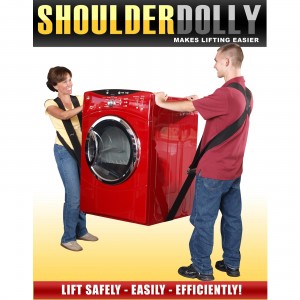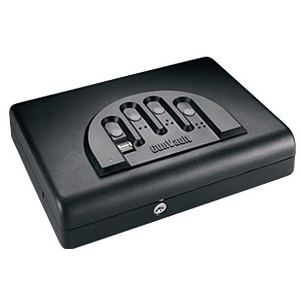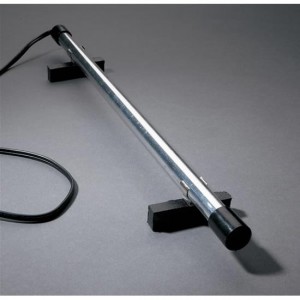In this section of the gun safe buyers guide, I’ll focus on the delivery and installation for gun safes.
Q: How are gun safes typically shipped?
A: Due to their weight, gun safes are shipped via a truck freight carrier. This is typically a semi-truck (18 wheeler), but it can sometimes come on a smaller box truck (UPS type truck). The safes are packaged with corner protectors and cardboard and they are bolted down to a wood pallet so the driver can easily move the safe with a pallet jack. Most curbside deliveries that are over 150 lbs come with a liftgate. A liftgate is a mechanical lift on the back of the truck that lowers the safe down to the ground level. If a safe is shipped “curbside”, that means it is left at the curb. On occasion, if the truck is able to do so, they will lower the safe on the driveway a little closer to the home. This depends a lot on the driver, the truck, and the slope of the driveway. Sometimes a large semi-truck just cannot back down a particular driveway. In that case it will be left at the curb.
Q: How do you move a gun safe into your home?
A: There are several methods and I think I’ve heard just about all of them. I’ll start with the easiest: Hiring a company to move it in for you. This service is called “White Glove” and there are usually several levels of service available. The first level (Bronze) is where the delivery company will wheel the safe into your garage for you. They drop it off inside your garage which is ideal if that’s where you plan to keep it. Keep in mind, the pallet will still be attached to the bottom of the safe. The next level of service (Gold) involves the company bringing the safe inside your home into a room of your choice. They will also remove the pallet that is bolted to the bottom of the safe. If the safe is under 900 lbs they can also move the safe up or down two flights of stairs. Once the gun safe is in place, the movers will take away all the packing debris and leave the it ready to use. If the delivery is out-of-the-ordinary or requires a lot of assembly time, a Platinum white glove service is also available.
The next method of delivery is for the “Do-It-Yourself-er”. By arranging some helpers or friends to move it from the curb into your home, you’ll avoid paying any additional delivery fees. I’ve heard all kinds of stories about rolling a safe on ping-pong balls or other various methods, but the most popular is to use a pallet jack or furniture dolly. The pallet jack is a great tool because the safe is already attached to a pallet so the jack easily rolls right under. The hydraulic lift on the pallet jack can make the move from the curb to your threshold very easy. Once it’s at your front door (the threshold), you’ll probably want a crew of 3-4 people there to help lift it inside. A furniture dolly would be helpful here as well.
A new product that I’m really impressed with is the Shoulder Dolly. This simple piece of equipment makes it easier and safer to lift heavy objects. It doesn’t give you “superpowers”, but it can make large and awkward items easier to handle so you can use all your strength without losing your grip. Keep in mind the weight limit is 800 lbs and you’ll need two capable lifters to move a heavy safe. The nice thing about this product is that a one-time purchase can be used over and over for several different objects. I highly recommend using the ShoulderDolly not only for gun safes, but for all your furniture or appliance moving needs.

Q: Can a safe be mounted to the floor?
A: Most of the time, yes! In fact most manufacturers pre-drill the mounting holes and recommend that you bolt the safe into the floor. Sometimes the mounting hardware is included as well. If not, the bolts can be picked up at your local hardware store. Even if you are mounting the safe in the garage or basement and you have a concrete floor there are lag bolts that you can use. The advantage to mounting your safe is that it won’t tip over and it adds another level of security by making it harder for someone to break-in. The best way to pry into a safe is by tipping it on its side, so eliminating that method of entry is ideal.
Q: What do I need to know about the delivery before ordering a safe?
A: First of all, you’ll want to take good measurements of all the doors that the safe will be going through. Compare those measurements to the dimensions of the safe. The most important specification of the safe is probably the depth because a safe can be tipped on it’s side which makes the depth the widest measurement when going through a door. You also want to check if the specification given includes the handle and hinge. Most of the time the safe is shipped with the handle inside the safe to keep it from getting damaged, but you’ll still want to account for the hinge that protrudes from the safe body.
You’ll also want to plan the best route for the safe to go through your home to its final destination. Is it easier to go through the front door, around the back, or through the garage? Make sure to mention at the time of the order if you have a steep or gravel driveway, a section of grass to roll over, a fence, or any other obstacles. This way the delivery company will make sure to bring the appropriate equipment the first time. It’s also a good idea to think of a possible “backup plan” in case they’re not able to get the safe where you wish. If the safe won’t fit or is too hard to maneuver into the location you choose, give them a secondary location to put the safe.
Q: I live in a rural area or have a long or unusual driveway. What are my options?
A: These deliveries are determined on a case-by-case basis depending on several factors. It would be best to contact a gun safe account rep to talk to them about your particular situation before ordering the safe. They can determine the best way to get the safe delivered. If it’s not suitable for a truck to drive down your driveway, you may need to pick it up at the end of the driveway or at a delivery terminal in your city. You can reach a GunSafes.com rep to talk about the different options at 800-540-1695 ext 401.
 A biometric gun safe is a gun vault that is equipped with a fingerprint recognition locking mechanism. If you are a gun owner it is your responsibility to ensure that your firearms are stored properly in order to prevent any kinds of accidents. Gun safes are available in all standard safe sizes, from small ones with just a few cubic feet of space to enormous vaults. Depending upon your requirements, you can either purchase a gun safe that unlocks only for those people who have authorized fingerprints or one that opens only for those whose retinal scans have been authorized to open the safe. However, there are several factors that should be considered while purchasing a gun safe which can help you in purchasing the best biometric gun safes.
A biometric gun safe is a gun vault that is equipped with a fingerprint recognition locking mechanism. If you are a gun owner it is your responsibility to ensure that your firearms are stored properly in order to prevent any kinds of accidents. Gun safes are available in all standard safe sizes, from small ones with just a few cubic feet of space to enormous vaults. Depending upon your requirements, you can either purchase a gun safe that unlocks only for those people who have authorized fingerprints or one that opens only for those whose retinal scans have been authorized to open the safe. However, there are several factors that should be considered while purchasing a gun safe which can help you in purchasing the best biometric gun safes.



